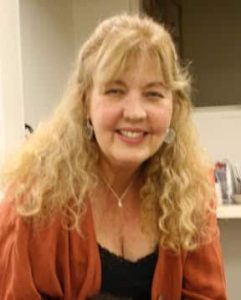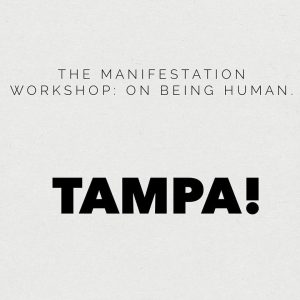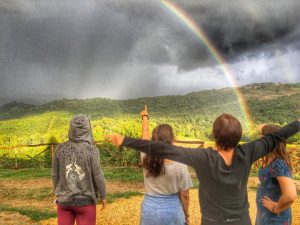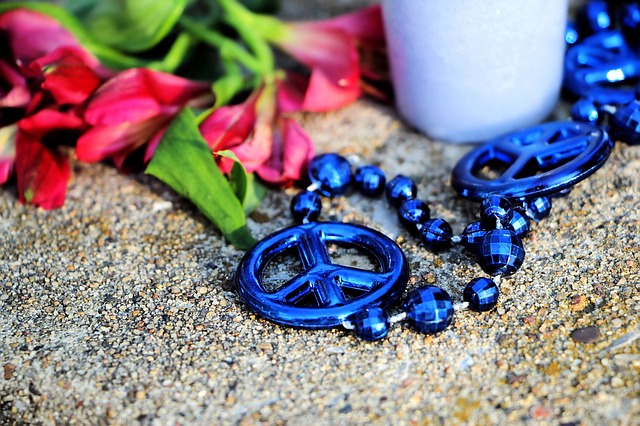By Jane O’Shields-Hayner
Laughter chimed through the house, and when the bed bounced I opened my eyes to see our children pulling at our pajamas, and shrieking out what they’d just seen under the tree. They begged us to wake up. I was sleepy, but it was Christmas morning, the one holiday a year parents can never sleep in.
I glanced at my iPad. It lay on my bedside table, within my reach, but I refused my impulse to grab it. Instead, I got up, brushed my teeth and followed the kids.
The tree was lit, as we always keep it throughout the night on Christmas Eve. From above, my living room seemed filled with a cloud of shimmering white light, and I descended into it, joining my family, who already had begun passing out gifts.
The holiday season arrived fast this year. In the wake of the presidential election, My husband and I Zombie walked through November, confused, in shock and denial, hardly knowing what to do. By December, we practiced our normal routines of the season, but strangely distant, and for myself, clutching at straws and feeling desperate. We were fixated on news updates as we hauled boxes of decorations from the attic and drove kids to endless holiday performances, concerts and parties. Late at night we mindlessly placed ornaments around the house while watching MSNBC. A pall lay over everything, but our determination to create happiness for the children kept us moving through the familiar tasks. Making art has always seen me through grief and it was, ultimately, my solace this year. However, yesterday’s antics from our president-elect were sobering and crassly timed. I had gone to bed disgusted and wrapped in dread.
This Christmas morning decorations sat on every surface. The pinnacle of beauty, the Taj Mahal of Christmas, was our three year-old, seven-foot living pine, crooked and scraggly from living outdoors most of the year, but elevated in December to the status of Christmas Tree. This year its pointed top glittered with Magnolia blooms, sparkling in red and white, clustered around a golden star, a detail I concocted after finding our Christmas angel no longer fit such oddly-shaped branches.
After the mayhem of paper and presents, after the floor was covered with toys, trash and clothing, after I sat at the piano and played White Christmas through twice, I paused, pivoted on the piano bench and surveyed the room. Only the cat and I remained. She rolled in a box of catnip, and was peppered with short bits of green on her sleek black and white fur. The room looked like an explosion in a piñata factory. I laughed. How obsessively I had labored to create perfection the night before.
Thoughts of my iPad called to me, and I commended myself for making it through the first hours of the day without turning on the radio or scanning three networks for news.
‘Maybe I’m having a breakthrough. ’I thought to myself, ‘or am I simply taking a time-out?’ To my grateful surprise, a glow of happiness slipped into my skin, and I held on to that absence of worry all morning. The chaos and joy of Christmas had finally won me over.
I shoved aside last night’s sticky Santa mugs and made French Toast. I dusted it with powdered sugar, which fell over my ocean blue counter tops, making my kitchen the White Christmas Irving Berlin and I dreamed of. Outside, in my California yard, the kids tossed a baseball, the mountains were green, and roses bloomed in December.
Much of my life’s work has been creating happiness and beauty for my family. I don’t mean just the superficial aspects of keeping a somewhat orderly home, cooking adventurously, or playing with color and design that soothes us when we’re tired and amuses us when we pause to reflect.
I am an artist and my primary tools are words and images. At my best, I pursue beauty as truth, and happiness as clarity, creativity and freedom from fear. I have worked throughout my adult life to nurture these qualities in my family, my community and in the greater community of life on earth.
This Christmas was like no other, for as I cooked and wrapped beside my husband, preparing for Christmas Eve, our president-elect, Donald Trump, was engaging in a tweet-storm with his pal, Vladmir Putin. While citizens of the world made their own holiday beauty, our world leaders tossed statements of one-upmanship back and forth, regarding who could expand and “win” a new nuclear arms race.
We are parents of two generations. Ten years ago we adopted the first of our two infant grandchildren from our disabled daughter. Two years later, she gave birth again, and we adopted the second. We are Mommy and Daddy in middle age, responsible for a new generation. Four children and a grandchild represent our most treasured and personal stakes in the future.
Second generation parents face the same challenges as in their first round, but there are differences. We have more aches and pains. Sleepless nights and mornings after are more difficult.
We cherish the time we have with our children, as all parents do, but we know, through experience, how quickly it passes, and we have less time before us to get things right.
When I became a first time mother, the bond I felt with parents everywhere unexpectedly overcame me. The love I held for my children radiated from my heart, through the walls of my home, and traveled beyond my small family, across distance and time. Truth covered me like a winged creature, with darkness and light. The experience was enough to drive me out of myself, and push me to begin the dismantling of fears and boundaries I had created in my youth. I knew my own darkest fears would poison my children, and I could no longer give them hiding space in my emotional closet.
Nuclear War was my fear and my shame. I grew up in the years of “duck and cover,” knowing well with every “bomb drill” in my 1950s elementary school, that it was all a ruse. I knew that should an Atom bomb be dropped, we would burn in flames and fall as ash. Our remains would explode in a cloud and spread over the world with poisonous rain. My aunt, a high-school science teacher, told me that truth. I still see her face; how she pursed her lips, wrinkled her brows, and whispered: “Don’t they know all those children would die?”
When I reached my teens, I attended slumber parties, and at some of them we played and slept in our friends’ fallout shelters. They were small Quonset Hut, tin-can shaped havens of underground freedom. We could scream, laugh and play our records as loud as we wanted in the private abodes. We could tell secrets, poke around, use the chemical toilet, take sodas from the refrigerator and open cabinets to sample dehydrated foods. The host parents would sleep that night, believing the kids were safe.
It was October, 1962, during the Cuban Missile Crisis, and many Texas families built or bought bomb shelters. Texas was along the front line, considered ground zero from the feared Cuban-based nuclear weapons. My family did not build a shelter, and I learned that each of my friends’ shelters was equipped with a shotgun. They were to be used to stop the neighbors from entering, if necessary, when the death bombs were on their way, or when the unlikely survivors came banging on the hatch that covered the ladder that descended into the underground world of assumed safety.
I have no way of knowing how my childhood terror, closeted as I kept it, affected every choice I made throughout my youth. I learned quickly not to speak of it. My mother waved the danger off, and told me: “You can’t think about those things!”
I tried hard not to, but it didn’t work. Other children and adults, even teachers, seemed unconcerned; so what was wrong with me? It would become my obsession, and later my shame. Shame and fear, both hidden and denied defined my growing identity.
At school, I kept a watchful eye on the big, yellow horn that screamed its warning periodically throughout my neighborhood. I could see it, looming over the fire station, from the windows of my junior high school. I felt sick each time I looked its way, and my body trembled every time it howled. I was hyper-vigilant, a term never, to my knowledge, used in the early-sixties.
On a Saturday morning, during the infamous Thirteen Days in October, I returned from an overnight bomb-shelter party and found my gray and white kitten lying lifeless on the cold concrete of my family’s garage. My mother told me it had been killed by a neighbor’s dog. I clearly recall deciding, right then, that I would soon also be dead. It was the week of my fourteenth birthday.
‘What’s the point of anything?’ I asked myself, and so I gave up. A straight-A student, from first grade forward, I stopped studying and I stopped doing homework. My anxiety was such that I could no longer focus, and over the next months and years, my most accessible diversions won me over. My friends, my boy-crush and my horse became all that mattered. They were all that separated me from my thoughts of doom. The relationship with my mother had gone miserably sour, and I began to pretend who I might be. I was clearly not the person I’d been.
I was eight months pregnant with my first child when I moved with my husband from the East Coast back to Texas and all my childhood fears stared me down. The B52s from nearby Carswell Air Force Base, with or without their nuclear loads, still soared in circular test flights over the city. With my belly so big I barely fit behind the wheel, I drove alone, miles into the country, beyond houses and freeway interchanges, just to watch them fly.
I was angry. ‘Why hadn’t the world solved this by now?’ I asked. I decided I would have no part in hanging a Nuclear noose around my baby’s neck, but I had no idea what to do.
Once I acknowledged my anger and fear, I grew exponentially fast, and regained a power and confidence I had left somewhere in my suburban childhood, when I had stopped believing in a future.
Having survived a painful marriage to a traumatized Vietnam veteran, I embraced the concept of pacifism and decided to become a Quaker. I gathered a group of people from around Fort Worth through a notice I placed in a Quaker journal and began to meet with them weekly for silent worship. The silence changed me, and I changed inside the silence, for it’s leadings would carry me to a future I couldn’t yet imagine.
In 1980, when my first child was two, and I was pregnant with another, a national groundswell, addressing the dangers of nuclear war, worked its way into Texas. I answered the call, and jumped on board, feeling that my ship had finally come in. My shame for knowing the terrible truth was vindicated.
I attended the first informational meeting for Nuclear Weapons Concerns in a basement room of a local church. We sat facing each other, a circle of strangers, in cold folding chairs. Some of the people there would become my friends for life. I was thrilled, for they were the most consciously engaged, well-informed people I had ever known, and when I looked into their eyes, I saw the reflection of my own unspeakable fears. I knew they weren’t deranged, and so, neither was I.
We became a community and worked side-by-side, carving out space in our busy lives with professions, day jobs and children at our feet. We performed our job gladly, for our job was to save the world.
We were wildly successful. The Nuclear Weapons Freeze Campaign was soon formed and it spread worldwide. People appeared from everywhere, committed from the beginning. During part of that time, I ran the North Central Texas Nuclear Freeze office from my home. I was paid five dollars an hour through a grant for twenty hours a week, while raising my two young children as a single Mom. I also finished my undergraduate education and waitressed at night.
I was exhausted, but the job was exhilarating. I hosted generals from the Center for Defense Information. I arranged speaking engagements for writers, religious leaders, doctors, economists and world-renowned movers and shakers.
It was an epiphany for me and apparently for others, for an enlightened movement of ordinary citizens joined together in such a way that the entire nuclear problem began to be understood from a new, deeper perspective.
We did not eradicate nuclear weapons from the planet, as was our long-term aspiration, but we educated the public, which was our first primary goal. We educated ourselves first through “teach-ins” and set up a speaker’s bureau. I was among those who spoke in the community about nuclear policies and weapons. At first, my knees shook, for I had grown shy, but I looked into the faces that filled the rooms and saw a hunger for truth and sanity. Then I knew I was a simply a conduit, and I was no longer afraid.
Helen Caldecott, the Australian doctor who was the president of Physicians for Social responsibility, flew into the Dallas-Fort Worth Airport with her husband, Bill and her assistant. I picked them up at the terminal, drove them where they needed to go and hosted Dr. Caldicott’s speaking engagement at Texas Christian University.
My life changed forever when I introduced Dr. Caldicott and heard her say, from the podium, “ You can each be as powerful as the most powerful person on the earth.” Then she recited Shakespeare’s words from Hamlet: “What a piece of work is man! How noble in reason, how infinite in faculty! In form and moving how express and admirable! In action how like an Angel!”
The following day, I drove her entourage back to the airport. I told her how wonderfully she spoke, and thanked her for her good work. She turned to me and said: “Your work is as important as mine. You do a wonderful job, yourself!”
Change began, and continued, although the journey of progress was slow and laboring. From the 1980s until 2016, bilateral treaties were made and stockpiles were reduced. We changed presidents and administrations at four and eight year cycles. Five presidents have served our nation since then, and all of them have refrained from overt threats or plans to use nuclear weapons in any of the conflicts our country entered.
Yet, on this Christmas Eve, I heard it reported that two of the most powerful men on the planet indulged their strongman fantasies, proclaiming they would increase their nation’s stockpiles of nuclear arms, as though they were playing poker. Reuter’s reported on December 23rd, “With Trump, nuclear brinkmanship is back.” The words screamed from radios, televisions, and computers. Once more, we stood on the brink of mutually assured destruction.
‘How morally bereft must these men be,’ I asked myself ‘to play this cruel game on December 23rd, with Christmas, Hanukkah, Kwanza and other religious, community and family celebrations in progress? Is there no sense of compassion in these hollow-eyed men? What kind of future do we face with these bullies and fools?’
I believe there is something in us described many ways: Love force, Life Force, Chi, or what Quakers call that of God. I think it exists whether we are religious or not, and whether we recognize it or not. The task of acknowledging this is difficult when facing down tyrants and those who champion the tyrants’ ways, but it isn’t impossible. We have examples throughout history where Love Force has prevailed. South Africa and America’s long struggle for Civil Rights are two. Sadly, we have history where it has not. Recently, incidents of terrorism around the world and the scorched earth warfare of Syria smolder in our memories with horror and suffering. However, as Martin Luther King beautifully stated: “The arc of the Moral Universe is long, but it bends toward justice.” Just because we can’t see light when we peer into the tunnel, it doesn’t mean the tunnel has no end.
I am an every-day writer, but I went months without finishing an essay or a story, knocked about emotionally, each day, by the blitzkrieg campaign led by Trump and his circle. After the election, I was immobilized by grief. The light I looked for seemed dim and distant. My writing became a collection of journal entries, fragments of dissent, insights, incomplete essays and commentaries.
Now I sleep at night, again. I write again, and I’m beginning to complete essays and work on longer projects. I realize I was living in the hyper-vigilant patterns of my childhood, obsessed with refreshing my news sources constantly, watching every move the President-elect made, as I would a snake, crawling through my yard.
I hear from friends, and people throughout the writing communities, that my creative block was not unique. Our mentors and teachers encourage us; they let us know that what we’re going through will pass, and we can and need to emerge and write. I tell people that myself, because I have lived through wars, divorces, tragedies, successes, failures and fearful periods of history and life.
The years before us are daunting, and they represent challenges most of us may never have faced. We see the frightful foreshadowing of the loss of our civil rights, and when the conversation goes deep, we whisper our fears of a nuclear war. I look at my young children, as I did decades ago, and find this state of our world and nation unacceptable.
I’ve given a New Year’s Party, cooked my family’s Texas recipes, and invited a few friends to share it for decades. This year I called it an Epiphany Party. It was January 7th, the day after Christian churches celebrate the arrival of the wise men at the stable where the infant Jesus was born.
We laughed and watched the children run and play up and down the stairs. We ate, joked, and shared wine and companionship until the early hours of morning, until the kids were cranky and asking to go to bed.
While the children weren’t watching, some of us cried. Others shook with fear and anger. Some of us had passed through the stage of grief and were throwing out ideas to form groups, to organize a movement.
There were questions and proclamations. I saw the stars in the dark night sky through the window on the same plane as our reflections in the glass; an image of people, clustered around my dining room table, with stars all around us.
I walked outside, as I sometimes do, to look inside my home as a lone observer in the dark. The stars I’d seen from indoors were brighter in the sky, and they reminded me of communities. Some shined alone. Others clustered from their own gravitational pull, forming constellations, obeying the laws of the universe, remaining still and cool in my sight, but burning, evolving, being born and dying in their distant, unique truths.
I woke this morning, determined to finish this essay, the first one in six months. Trump held his first news conference since the election today. It was hard to watch, and I found it disingenuous, shamefully arrogant and violent in tone and rhetoric. I realize we have to cope with how it is, for now, but it doesn’t mean we accept it or stop trying to shape and heal our nation and culture.
For an unknown period of time, we must live in a world where one or more powerful political bullies hold the nuclear triggers. It’s a terrible reality. We are living in a country, right now, that has become a frightful political mess, and it befell us just as many of us thought our nation was becoming a safer, more inclusive and just place to live. Many of us believed we were on a journey toward “The Beloved Kingdom” Martin Luther King described in the 1960s.
Amid the chaos, Epiphany has oddly arrived at my door. The groundswell of refusal to practice policies of injustice and hate, and the vision of where we need to go and what we need to do define this period of time for me. Like Dr. King, I don’t see the end of the arc of justice, but I believe it exists. I believe in my friends, my mentors, my communities and the thousands of communities throughout this land. Coming together is our Epiphany. I can’t think when we’ve ever needed each other more than now.
If the beauty we made was never destroyed, how wonderful we think it would be. Living through three generations has taught me that is never the case, and the job of cleaning up is endless. When your home is ransacked by a troop of wild children, when the earth shakes and buildings fall, when cancer occurs, when a loved one dies, when your nation loses its course and is seized by a frightful regime, when the incoming president champions Nuclear War, at first we face shock and confusion, but when we get on our feet, we know not to quit until its solved, for it’s only ourselves who will do it.
Now is the time for clarity, creative action and strength. Speak out in your colleges, synagogues, temples, churches, community centers, and Mosques. Speak to your school board and PTA. Run for local positions and offices. Form groups where everyone talks and listens. Form speaker’s bureaus. Most importantly, speak your own truth and draw your own strength. It’s okay to be angry that “no one has fixed it by now.” It’s not okay to stop there, or to pretend it’s beyond our power to change it. We are the ones we’ve been waiting for.

Jane O’Shields-Hayner is a writer and a visual artist. She writes memoir, essays, non-fiction, fiction, and poetry, addressing universal, spiritual issues. She also produces and exhibits drawings and paintings. Jane has a Bachelor’s Degree in studio art, and education, and a Master’s Degree in occupational therapy. She practices Occupational Therapy with a specialty in home health care and has a history in teaching and as a community and global activist. Jane lives with her husband and the two youngest of their four children in the foothills of the Santa Ana Mountains, in Southern California. Her recent work has been published in Tiferet Journal, Friends Journal, The Manifest Station, and Western Friend. She is currently finishing a trilogy of short-stories written in homage to Kurt Vonnegut, and addressing current but timeless issues.

Next one after this is NYC Feb 4 at Pure Yoga West. You don’t need to be a yogi at all. Just be a human. Click photo to book.

